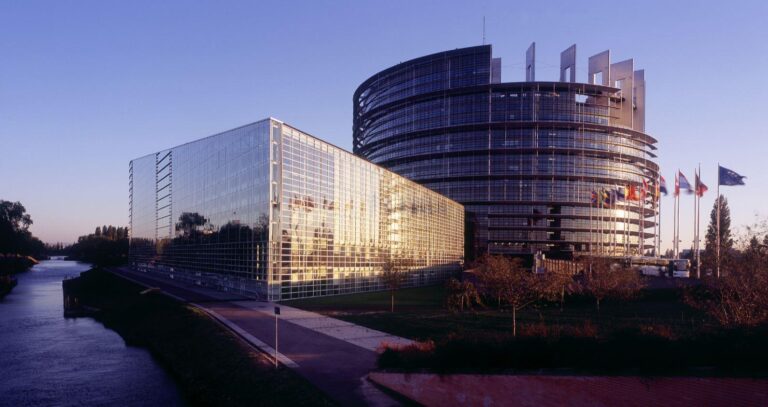Strasbourg: An EU Capital That Offers History, Culture and International Flavour
Nestled along the banks of the Rhine River, Strasbourg stands as a vibrant testament to Europe’s rich tapestry of history and culture. As one of the European Union’s key capitals, the city seamlessly blends political significance with a uniquely international flavour, making it an attractive destination for both visitors and residents. From its intricately designed Gothic cathedral to the charming canals of the UNESCO-listed Petite France, Strasbourg’s architectural marvels tell stories of centuries gone by. This article explores how the city has emerged as a pivotal crossroads of Europe, where centuries of history and multicultural influences converge, enriching the lives of those who call it home and captivating the hearts of all who visit.
Exploring Strasbourg’s Rich Historical Tapestry
Strasbourg stands as a beacon of historical significance, seamlessly weaving together diverse cultural threads from its complex past. As a pivotal center of European governance, it has often found itself at the crossroads of nations and ideologies. Among the city’s most notable landmarks is the Strasbourg Cathedral, an architectural marvel that towers over the city with its intricate Gothic design. Beyond the cathedral, the La Petite France district enchants visitors with its well-preserved half-timbered houses and picturesque waterways, transporting you back in time. The city’s parks and public squares, rich in artwork and history, also echo tales of resilience and reconciliation, reflecting its evolution through wars and treaties.
Delving deeper into its history, one must not overlook the role of Strasbourg as a key intellectual hub during the Renaissance. The city was home to luminaries such as Johannes Gutenberg, who revolutionized printing in the 15th century. This pivotal moment is celebrated at the Bibliothèque Nationale et Universitaire, where visitors can explore rare manuscripts and the evolution of literature in Europe. Crucially, the various cultural festivals celebrate Strasbourg’s multifaceted identity; from the traditional Christmas market, the oldest in Europe, to modern art installations during the Strasbourg European Fantastic Film Festival, there is always something that illustrates the city’s enduring spirit and commitment to artistic expression.
Cultural Highlights: Museums and Festivals Worth Visiting
Strasbourg is a city where history and modernity coexist harmoniously, and its museums are a testament to this vibrant cultural tapestry. Among the most notable is the MusĂ©e d’Art Moderne et Contemporain, showcasing a rich collection of pieces from the 19th century to the present day. Visitors can admire works by renowned artists including Picasso and Monet, all while enjoying breathtaking views of the Rhine River. Another gem, the Palais Rohan, houses three museums: the Museum of Fine Arts, the Archaeological Museum, and the Museum of Decorative Arts, offering diverse insights into the region’s cultural heritage. Each location offers guided tours that reveal fascinating stories behind the exhibits, making for an enlightening experience.
Strasbourg is also famous for its lively festivals, which celebrate both local and international cultures. The Strasbourg Christmas Market, one of the oldest and most prestigious in Europe, transforms the city into a winter wonderland every December. Visitors can savor traditional Alsatian delicacies while browsing handcrafted gifts. Another standout event is the Strasbourg Music Festival, which attracts artists from around the world, showcasing talent across various genres—from classical symphonies to contemporary beats. For a comprehensive cultural experience, the table below highlights key festivals throughout the year:
| Festival | Month | Highlights |
|---|---|---|
| Christmas Market | December | Alsatian treats, handcrafted gifts, festive music |
| Strasbourg Music Festival | June | International artists, diverse genres |
| Festival Européen de la Gastronomie | September | Culinary workshops, tastings, chef showcases |
A Culinary Journey Through Strasbourg’s Diverse Flavors
Strasbourg’s culinary scene is a vibrant tapestry, weaving together elements from its rich history and diverse cultures. Renowned for its unique Alsatian cuisine, it marries French and German influences, making every meal an experience steeped in tradition. Visitors can savor a variety of iconic dishes, such as choucroute garnie (sauerkraut served with various meats), flammekueche (a thin pizza-like tart topped with crème fraĂ®che, onions, and lard), and bretzels (soft pretzels) that capture the region’s warm, hearty flavors. This tapestry also includes bustling markets, such as the expansive Place de la CathĂ©drale, where local vendors offer seasonal produce, artisanal cheeses, and freshly baked bread, making it easy to immerse yourself in the local gastronomy.
The city boasts a plethora of dining options, catering to every palate and preference. From cozy bistrots serving traditional fare to innovative Michelin-starred establishments pushing the boundaries of contemporary cuisine, there is truly something for everyone. A significant aspect of Strasbourg’s culinary identity is its commitment to using local ingredients, often highlighted in dishes that pivot around the seasons. Explore the nuances of international flavors reflected in diverse eateries, including:
- Lebanese restaurants featuring flavorful mezze and shawarma.
- Asian fusion kitchens offering creative sushi and ramen dishes.
- Mediterranean bistros serving fresh seafood and light, aromatic fare.
Each experience not only satisfies the palate but also tells a story – of the people, their history, and the greater European identity that Strasbourg embodies.
Navigating the International Pulse of the European Union Capital
Strasbourg stands as a vibrant tapestry woven from the threads of history, culture, and international diplomacy. The heart of the European Union pulsates here, with institutions like the European Parliament and the Council of Europe shaping policies that resonate across the continent and beyond. Visitors can explore the magnificent Gothic architecture of the Strasbourg Cathedral, which serves as a testament to the city’s medieval past. As you stroll through the picturesque La Petite France district, cobblestone streets lead you to charming cafĂ©s and boutiques, offering a blend of local Alsatian fare and global cuisines.
The city’s multicultural atmosphere is further enhanced during events that draw international crowds, reinforcing Strasbourg’s role as a European melting pot. Key highlights include:
- Strasbourg Christmas Market: A cherished tradition attracting visitors with its festive charm.
- European Art Exhibition: Celebrating contemporary talent from various EU member states.
- International Film Festival: Showcasing diverse cinematic voices from around the globe.
With its unique blend of history and modernity, Strasbourg not only hosts significant political functions but also becomes a stage for cultural exchanges that capture the essence of Europe’s diverse heritage.
Wrapping Up
In conclusion, Strasbourg stands as a vibrant testament to European integration, seamlessly blending its rich history with a dynamic contemporary culture. As one of the capitals of the European Union, it not only hosts pivotal political institutions but also embraces a diverse heritage that reflects its unique position at the crossroads of Europe. Visitors and residents alike are drawn to its cobblestone streets, striking architecture, and a culinary scene that celebrates international influences while honouring local traditions. As Strasbourg continues to evolve, it remains a focal point for dialogue and diplomacy—an inspiring reminder of the continent’s shared values and aspirations. Whether for a weekend getaway or as a cultural hub, Strasbourg promises an enriching experience steeped in history and a vibrant international spirit.




